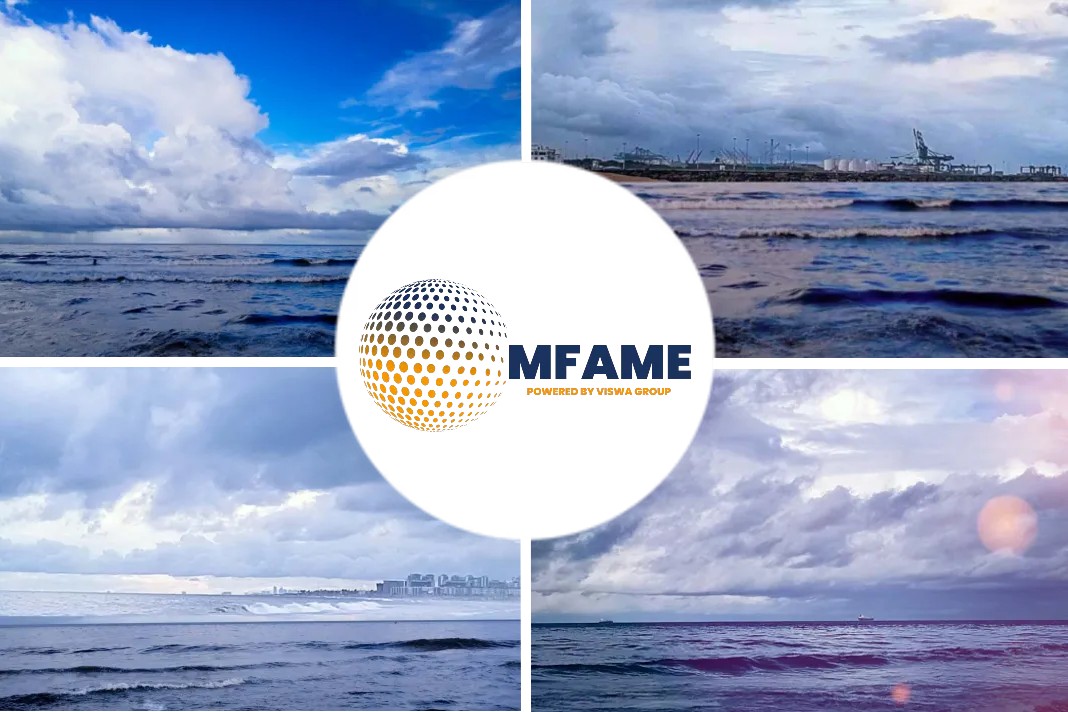
Classification society Bureau Veritas details results of a shipboard carbon capture and storage (CCS) study showing how it can help shipping reducing emissions, says an article published on seatrade-maritime.
Environmental sustainability intensifies
As the world’s focus on environmental sustainability intensifies, the shipping industry is compelled to seek innovative solutions to reduce its carbon footprint. Solutions that reduce emissions are needed urgently.
A joint study conducted by Bureau Veritas (BV) and Qiyao Environment
Environmental
al Technology, in collaboration with Wah Kwong Maritime Transport Holdings, has investigated the viability of utilising onboard carbon capture and storage (CCS) technology on bulk carriers. This joint study not only demonstrated the technical feasibility but also the economic viability of employing CCS technology on the vessels in question.
More stringent regulations
At the heart of this study was the retrofitting of two existing bulk carriers, namely the 53,000-dwt supramax vessel, Tianjin Venture (constructed in 2009), and the 176,000-dwt capesize ship, CSSC Wan Mei (constructed in 2012), both under the ownership of Wah Kwong Maritime Transport Holdings.
These two vessels were chosen for the study due to the imminent risk of their existing Carbon Intensity Indicator (CII) ratings falling short of compliance with upcoming, more stringent regulations. It is important to note, that whilst guidelines for CCS are under development at IMO level, there is currently no provision for CCS in the CII calculations.
CCS technology employs
Qiyao Environmental Technology, a subsidiary of the Shanghai Marine Diesel Engine Research Institute, spearheaded the design and implementation of customised CCS units tailored specifically for these bulk carriers.
The CCS technology employs an organic amine solution to extract carbon dioxide (CO2) from the ships’ exhaust gases. This extracted CO2 is subsequently subjected to liquefaction and stored, for disposal to a reception facility or future utilisation.
The efforts invested in the CCS retrofitting study bore fruit when Bureau Veritas (BV) granted its Approval in Principle (AiP) to Wah Kwong Maritime Transport Holdings and Qiyao Environmental Technology.
The project considered spatial requirements, operational impact, capital and operating expenditure projections, and the AiP award validated the technical soundness of the retrofit project.
The exhaust gas streams
At Qiyao’s Environmental Technology land-based facility, the CCS test units endure rigorous laboratory testing, emerging with an impressive CO2 capture rate of approximately 85% from the exhaust gas streams.
This achievement formed the bedrock upon which continuous refinement and optimisation of the CCS system in a land-based facility that mimics a marine installation.
The CO2 capture rate is indicative of the immediate impact that this technology can deliver. Unlike alternative fuels, which have a longer timeline until they are readily and widely available, this technology is ready now. During this transitional phase, as we actively seek long term solutions that proactively mitigate emissions at the source, CCS can play a valuable role in delivering short-term emissions cuts.
Strategic placement
The study was also valuable in identifying and resolving a number of technical challenges associated with CCS retrofits. One key issue was finding the space on the vessel to install the CCS technology. Smart spatial planning was essential for the project to be successful and not hinder the normal running of ship operations.
The integration of CCS equipment, without impeding cargo capacity, necessitated innovative design solutions. The strategic placement of CCS units around the funnel and atop the deck provided just that. On smaller ships, such as Tianjin Venture, there was the adaption of having four small LCO2 storage tanks instead of one large one, as a further space saving measure.
Economic viability
As with so many innovative projects, the question of economic viability is often the elephant in the room.
One of the key aims of the study was to assess whether the installation and maintenance of the CCS system was able to pay for itself. The outcome showed that the CCS technology not only reduces emissions, but also delivers a return on the investment.
CAPEX and OPEX were analysed, along with a preliminary analysis of the EU Emissions Trading System, for the period from 2023 to 2030.
The calculations were made on the assumption that ships will sail between non-EU and EU ports and that the legislation accepts CCS as a countermeasure to reduce CO2 emissions.
Current emission levels
For Tianjin Venture, between 2023 to 2030, the cost savings from EU ETS would be $1,375,000. For CSSC Wan Mei, the EU ETS cost savings between 2023 and 2030 would be $2,254,500. The value of the captured CO2 between 2023 and 2030, assuming that it could be traded as a commodity for re-utilisation within a circular economy, would be $6.7m for the Tianjin Venture and $11.1m for the CSSC Wan Mei.
This joint study showcases a significant step towards sustainable shipping practices. By retrofitting older vessels with CCS technology, the maritime industry can bridge the gap between current emission levels and evolving regulations. As the findings illustrate the technical feasibility, economic viability, and immediate benefits of CCS, it is clear that such solutions can play a valuable role in steering the shipping sector towards a more sustainable future.
Did you subscribe to our daily newsletter?
It’s Free! Click here to Subscribe!
Source: seatrade-maritime















